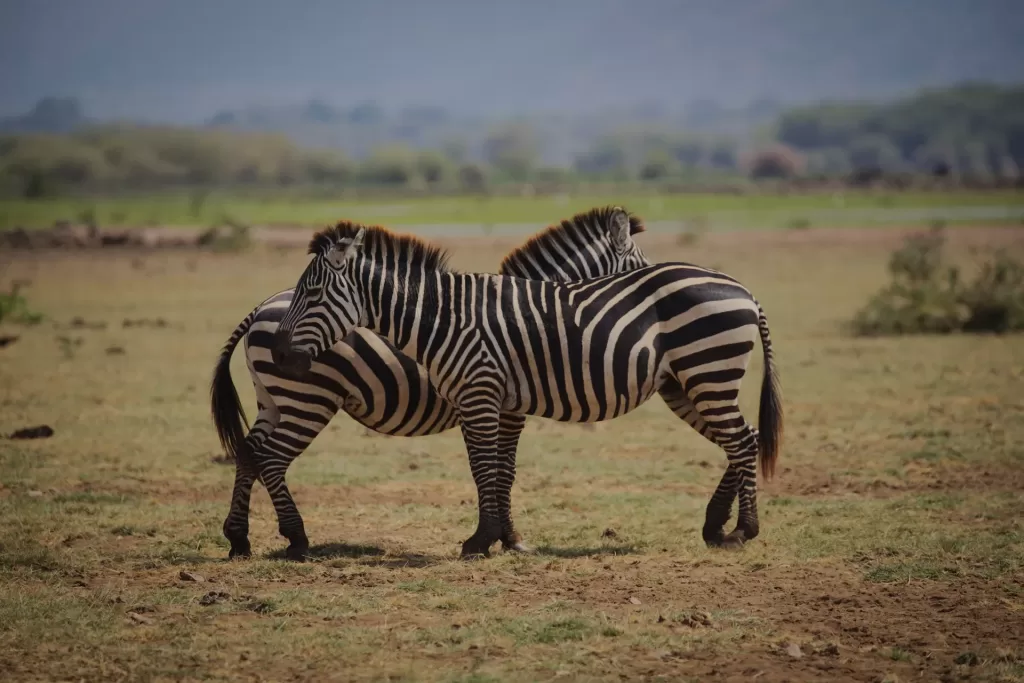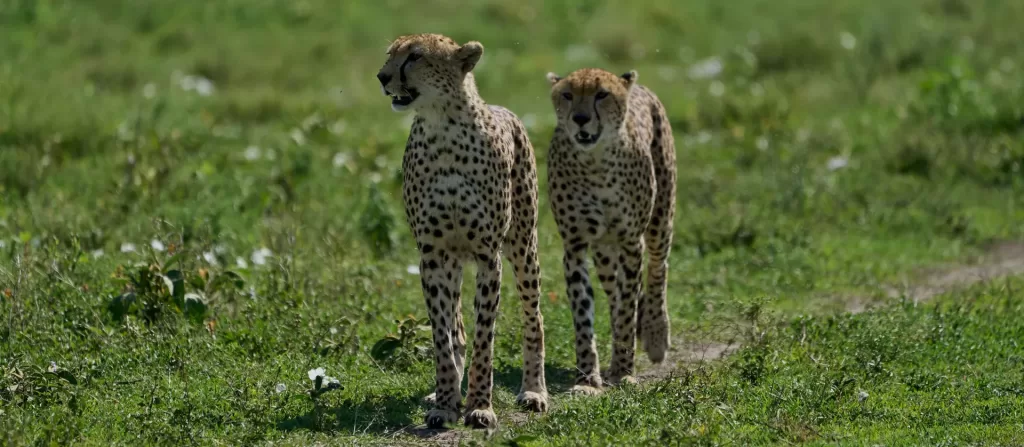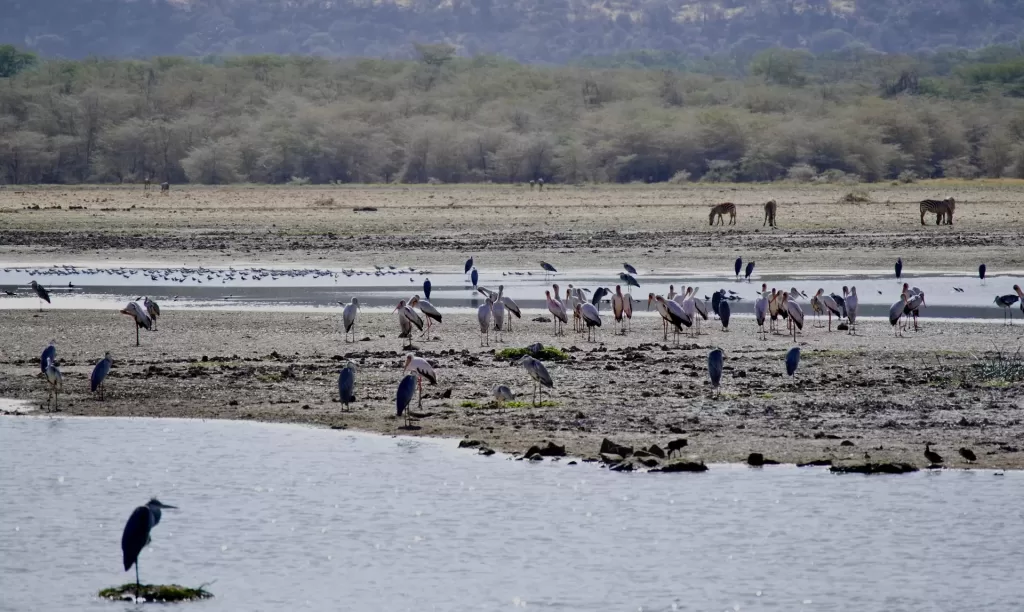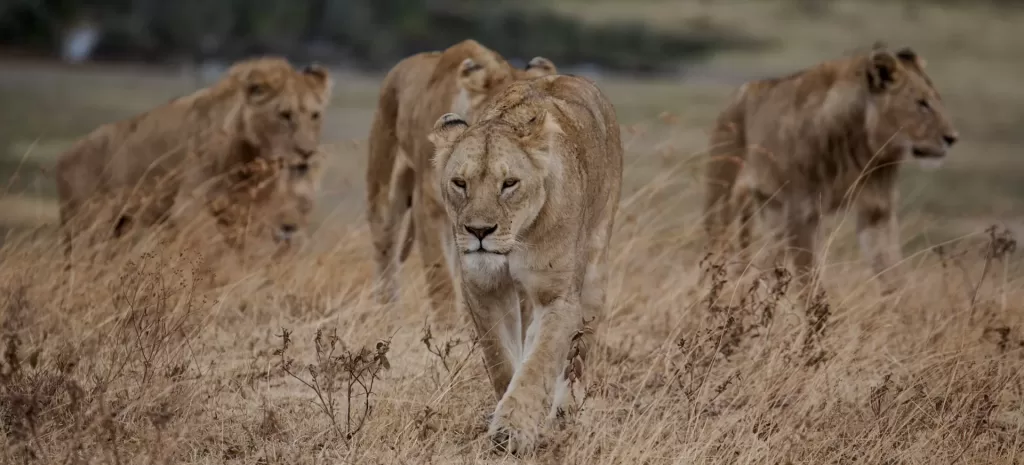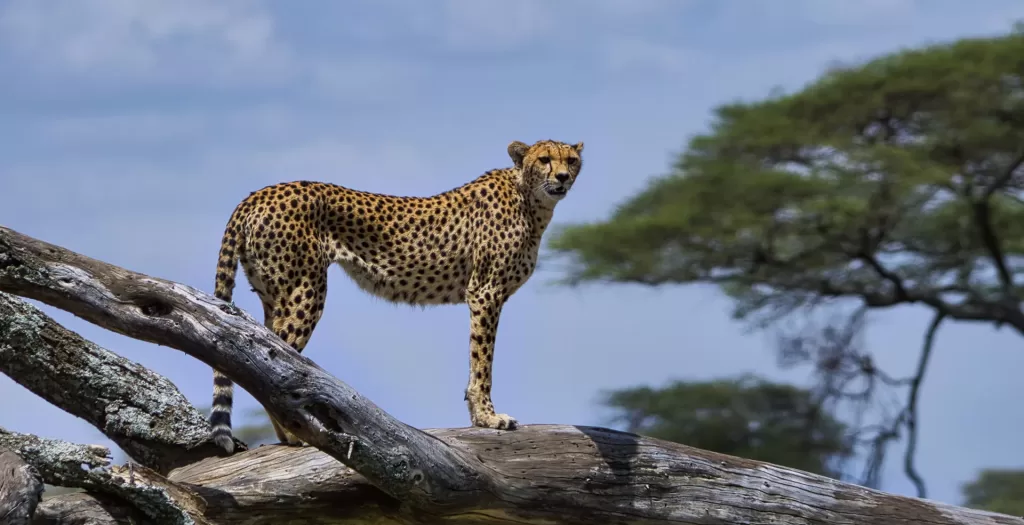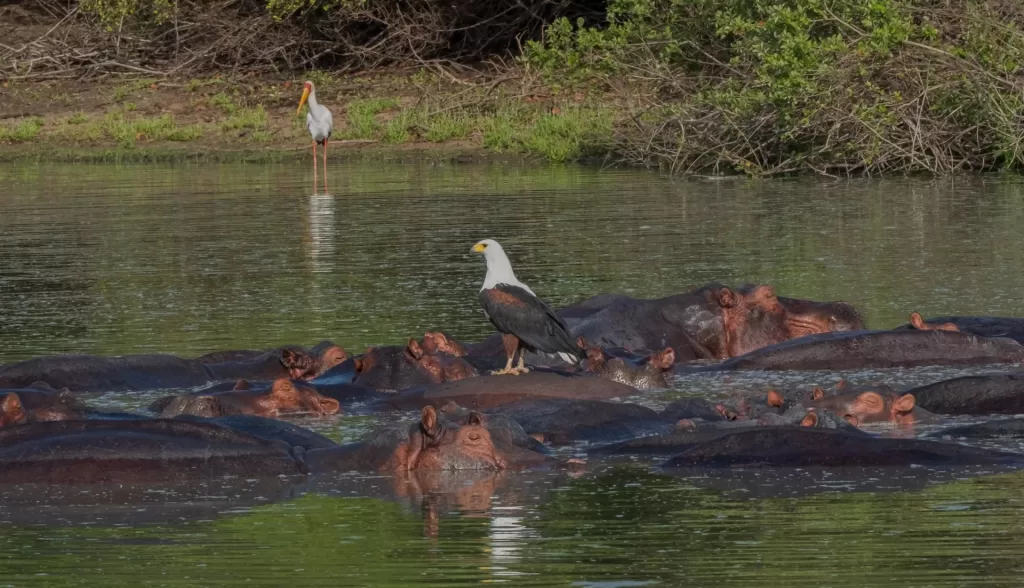Kilimanjaro National Park
Home » Tanzania Safari Experiences »Kilimanjaro National Park – Africa’s Highest Mountain and ‘Roof of Africa’
Kilimanjaro National Park covers 1668 sq km and is home to Mount Kilimanjaro which is the tallest mountain in Africa and the tallest free-standing mountain in the world. Mt. Kilimanjaro is a UNESCO world heritage site and also a Seven Natural Wonders of Africa.
It is Africa’s highest free-standing mountain rising from cultivated farmlands through lush rainforest to alpine meadows and finally to the twin summits Kibo and Mawenzi. Mt. Kilimanjaro is also called stratovolcano, a term for a very large volcano made of ash, lava, and rock.
At 5896 metres (19 340 feet), Mt. Kilimanjaro is one of the continent’s magnificent sites and one of the largest volcanoes in the world. Mt. Kilimanjaro has three main peaks named Kibo the summit at 19,341 feet (5,895 m), Mawenzi at 16,893 feet (5,149 m) and Shira at 13,140 feet (4,005 m).
The highest point on Kibo’s crater rim is called Uhuru, the Swahili word for “freedom.” The lower rainforest is home to Wildlife that includes, elephants, leopards, buffaloes, monkeys and elands that are seen between Kibo and Mawenzi.
Things to do in Mt.Kilimanjaro National Park.
Climb Mt. Kilimanjaro
There are seven different routes that provide opportunities for the ascent to the summit and they take between 6-9 days of climbing. They are split into 3 routes as below.
Southern Routes: Marangu, Machame, and Umbwe are the three routes that ascend from the south.
Western Routes: Lemosho, Shira, and Northern Circuit are the three routes that ascend from the west.
Northern Route: There is only one route that ascends from the north known as Rongai.
Climb Kibo Peak
Kibo Peak is one of the three volcanoes of Mount Kilimanjaro, and is the highest peak of the mountain Kilimanjaro and Africa! Magnificent views all year round are guaranteed. This is the only peak that retains its snow throughout the year.
The trek up to the peak can be rather strenuous and is recommended for professional climbers. Don’t worry, though. There are a lot of base camps at the lower levels where you can camp and soak in the views!
Walk the Shira Plateau
This plateau stretches out over 13 kilometres to the west of Kibo, at an elevation of 3 962 metres. Shira Plateau lies to the west of Mt. Kibo on one of the routes to climb up Mount Kilimanjaro. This spectacular plateau is a caldera. When you walk through the plateau, you will be stepping on the remains of a volcano that expired over 500,000 years ago.
There are encounters of wildlife from the neighboring Amboseli National Park, across the border in Kenya. Walk along paths treaded by herds of massive elephants, eland antelope, buffalo, and even lions. Look out for the plateau’s silvery glaciers and rocky ridges, and the Lemosho forest with lush, rainforest valleys.
Explore Chala Crater Lake
Chala Crater Lake is located in the shadow of the Kilimanjaro, on the border between Kenya and Tanzania in a caldera that was most likely formed after volcanic activity on the mountain.
Take a walk down the 100m deep crater rim to the lake shore and cool your feet at the water’s edge among the rocks as you watch the water ripple peacefully through the lake in shimmering delight.
There are about 200 bird species at the lake, other wildlife includes primates like colobus monkeys, vervet monkeys, blue monkeys and baboons.
Visit Olpopongi Maasai Cultural Village
The Olpopongi Maasai cultural village offers traditional, Maasai-style accommodations. In the Maasai village, you’ll get a chance to experience the authentic daily life of a Maasai and learn about what it means to be a ‘Maasai’.
The village is located in the middle of west Kilimanjaro where elephants & giraffes roam free under the shadows of Mt Meru & Kilimanjaro. A truly exciting and unique experience.
Where to stay in Kilimanjaro Park
Kilimanjaro Mountain Resort
The Resort is located on the slopes of Kilimanjaro, surrounded by lush gardens, and banana and coffee trees, less than 10km from the Kilimanjaro National Park Marangu gate, and about 80km from Kilimanjaro International Airport.
It consists of 42 beautifully furnished rooms, all with en suite bathrooms (shower & tub), hairdryer, mini-bar, tea/coffee making facilities, and satellite TV. Other facilities include a lounge, bar, 2 restaurants, 3 fireplaces, a coffee bar, an internet café, a swimming pool, gym and spa facilities.
Shu’mata Camp
The camp is located at the foot of Kilimanjaro, deep in Maasai land, in an area known as South Amboseli in northern Tanzania. At the front of the camp, bush savannah melts into the slopes of Kilimanjaro, towering above into the blue skies of Africa, so close that on a moonlit night details of the glaciers can be visible when there is no cloud cover.
There are Five spacious tents on a hill with magnificent views. The tents are spacious en-suites with their own verandas and safari chairs. They feature a dressing table, a Hemingway-style hanging cupboard, bedside tray stands and a lockable trunk for personal belongings. The camp has a central lounge, bar and restaurant.
Africa Amini Maasai Lodge
Located in the middle of the wilderness of the Maasai steppe, Africa Amini Life’s seven bungalows each boast handcrafted furniture, hot showers, and a stunning view of Mt. Kilimanjaro. Guests at Africa Amini Maasai Lodge can expect to spend their days on a journey of cultural discovery before enjoying a sumptuous Maasai-inspired meal and a comfortable night’s sleep.
Other facilities include a swimming pool, sauna & spa, and free WiFi in the lounge and in the health spa. Your stay at the lodge will include Maasai-themed activities as part of the package.
These include a hunting/throwing spear competition with the Maasai warriors; a nature walk accompanied by a Maasai shaman to discover the surrounding areas and meeting the community of Ngabobo who will share their extensive knowledge of medicinal herbs, try a ride on the back of a donkey, and enjoy the amazing view of Kilimanjaro.
The best time to visit Kilimanjaro Park
The best time to visit the Park is the dry season from December to mid-March and mid-June to the end of October. However, although these are considered to be the best times to climb the mountain in terms of weather, they are also the busiest months.
How to get to Kilimanjaro Park
The distance from Arusha City to Moshi Town is 123Km and it takes two-hour (2hrs), reaching Marangu (Park Headquarters) from Moshi Town is 48 km and takes an hour (1 hour) drive. It is about 86 km from Kilimanjaro International Airport (KIA) to Park Headquarters (Marangu) by road and it takes one and a half hours (1Hr 30Min). The park can only be reached by road.
ABOUT TRAVELERS LINK AFRICA
Our mission at Travelers Link Africa is to connect people to positive travel experiences enabling them to see the world differently, transforming lives and the communities visited.
To do this we offer authentic travel experiences taking you on both an outer adventure and an inner journey to create memories of a lifetime with Uganda, Kenya, Tanzania, and Rwanda
CONNECT WITH US
We’re here to help, so get in touch with our friendly travel consultants to book your package or add customizations your safari
Our main phone number is
+256 754 062 366
– OR –

